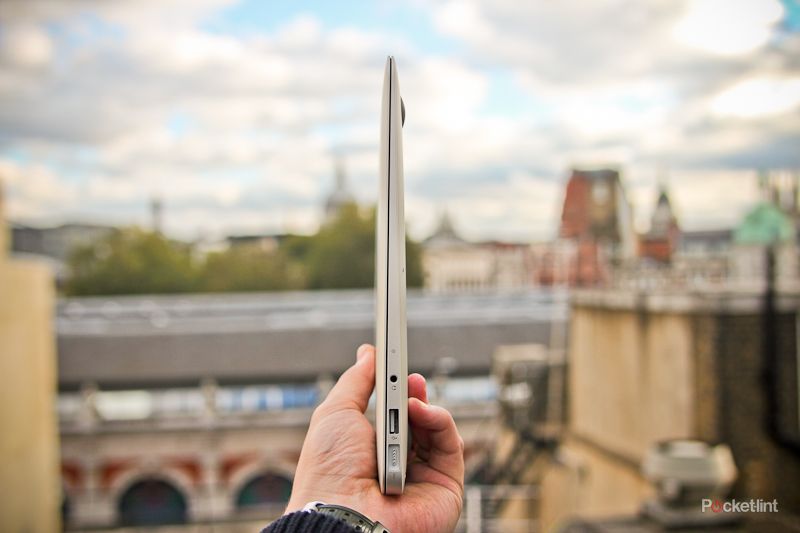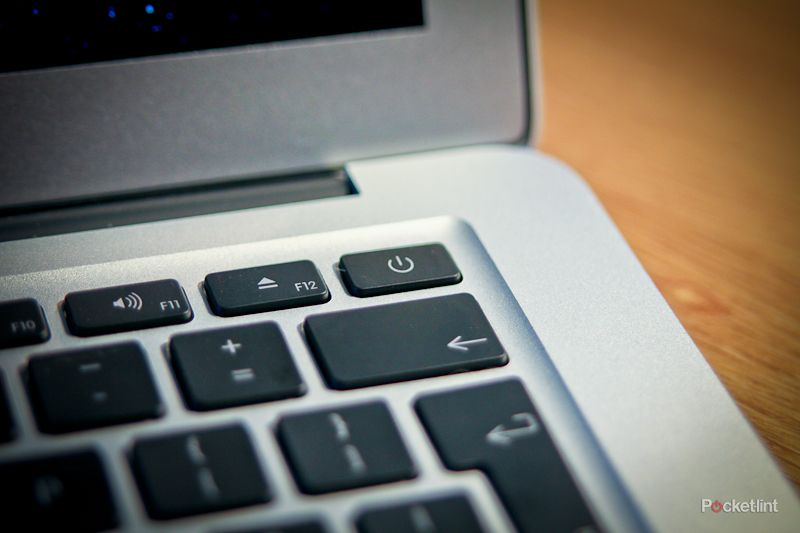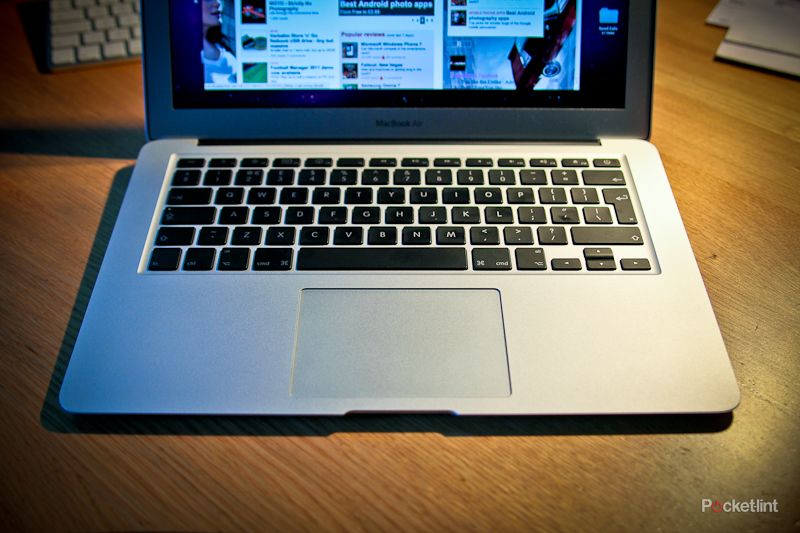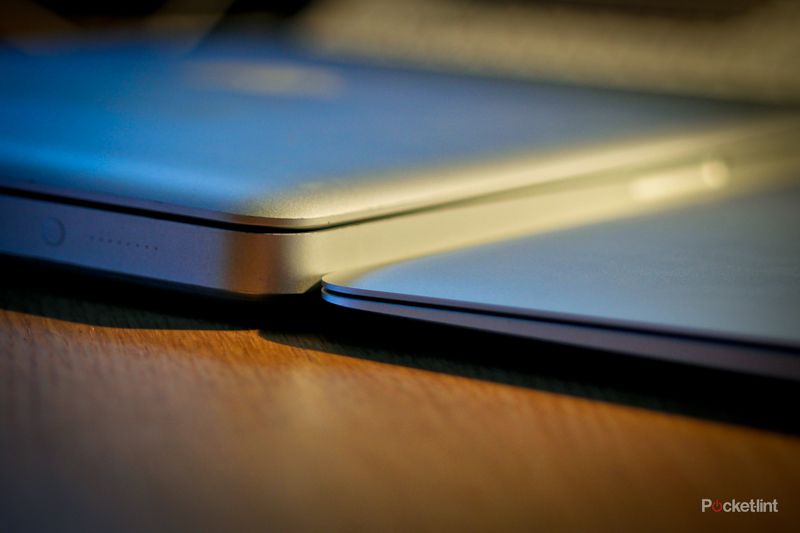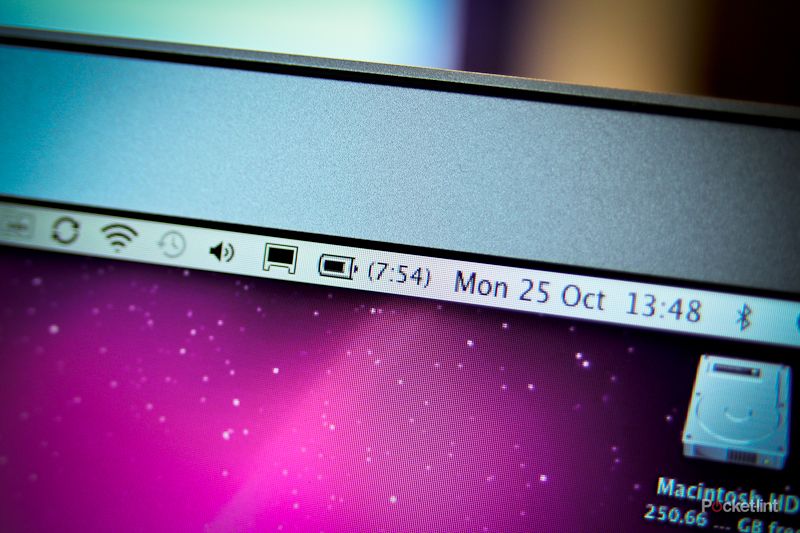It's beautiful, it's stunning, it's thin, it's like a supermodel. That is probably the best way to describe the MacBook Air to anyone asking. But should you be buying the thinnest MacBook on the planet? We've been living with the new model to find out.
Our quick take
On the surface the MacBook Air looks like an expensive option compared to Apple's MacBook Pro that you get off the shelf. In fact, at a quick glance the difference is over £500, but to be fair, the off the shelf MacBook Pro doesn't come with the flash storage; an optional upgrade that adds £640 to the price tag.
Factor that in and the MacBook Pro's pricing starts to become more realistic considering the lack of optical drive and ports like the Ethernet and FireWire. So what you are actually getting is a fair deal, an expensive one agreed, but it's that move to SSD that is the expensive element here, not necessarily Apple just ripping you off.
When we reviewed the first MacBook Air in February 2008 we slammed it. Why? Because it was overly expensive and it was too ahead of its time when it came to losing the Ethernet socket; all of that, combined with an average battery life, meant we felt it was a model that was never destined to leave the house.
Almost 3 years on and a lot has changed. Wi-Fi is certainly more prevalent (although we still take some issue with the lack of Ethernet socket), the battery life has been drastically improved thanks to software and hardware improvements. Factor that in with a seismic shift to offering music, movies, software and everything else for download online and you can see why the Apple MacBook Air starts to make sense for most people.
So the big question, should you buy or upgrade?
If you want the top of the range, and don't mind losing the optical drive (the OS now comes on a USB drive if you need to reinstall the OS) then you might as well enjoy that extra thinness. Go on, treat yourself. You can always buy an external DVD drive for a couple of quid on eBay when you need it, and it will be worth your time buying the Ethernet adapter if you travel a lot - most hotels still aren't 100 per cent Wi-Fi friendly in our experience.
If you've already got a MacBook Pro and are merely tempted by the lure of the new options and speed, it might be worth just upgrading your hard drive to an SSD drive instead. It's not the exciting option that you probably want to hear, but a 256GB SSD from Crucial that fits the MacBook Pro costs just under £450, and while that's expensive, it's not £1500.
The final choice is down to you and what you need, but the overriding good news is that unlike the first MacBook Air outing, this is one to consider rather than just being written off from the start.
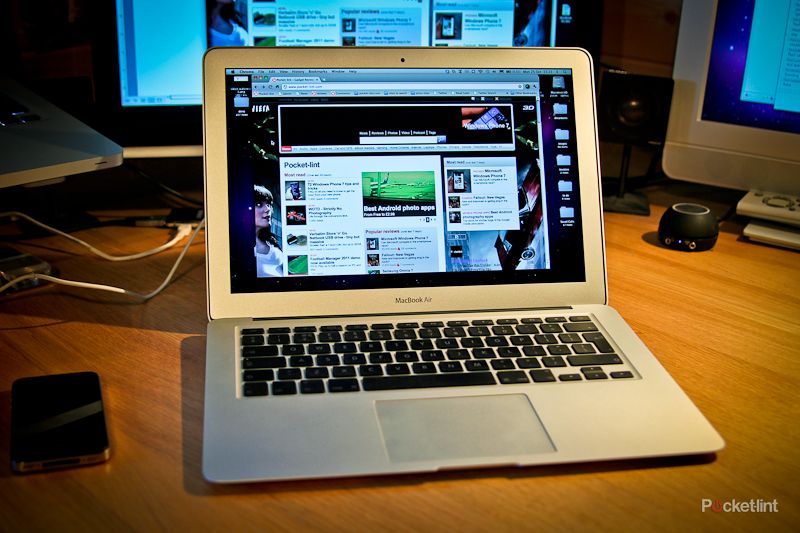
Apple MacBook Air (2010) - 4.0 / 5
| FOR | AGAINST |
|---|---|
|
|
Cast from aluminium, the MacBook Air is "cake cutting" thin with a design that tapers from 17mm at the back to just 3mm at the front, although you've got to also take into account the feet and general sitting on the desk form factor. If you're wondering how that stacks up against a MacBook Pro - that 17mm is roughly the same height as the side of the bigger more powerful laptop, while the thin end when on a desk is the height of a CD jewel case.
With such a thin design the laptop isn't that heavy, and that means a total weight of just over 1.32kg for the 13.3-inch model we've got on test. Against the 13.3-inch MacBook Pro it's almost half the weight (2.56kg), and not surprisingly in the hand it really does feel it. The reason for that massive weight saving is that you've lost not only a large chunk of metal, but a couple of bits of tech as well. There is no optical drive and no regular hard drive either, with the MacBook Air only coming with flash storage options - 128GB or 256GB.
You'll also lose port options as well. There is no Ethernet and no FireWire. You get two USB sockets (one on either side so you can use a mobile broadband dongle or USB drive without taking both ports out at the same time), a Mini DisplayPort socket, SD card reader and a headphone/mic-in socket.
Not only is the design thin, but it's also minimalist. There is no external battery indicator for example, the mic has shifted to the side rather than on the top as in the MacBook Pro range, and the power button is now a physical key within the keyboard rather than a separate one within the casing.
The new laptop might be thin, however the keyboard is still the full size keyboard with 78 (US) or 79 (ISO) keys, including 12 function keys and 4 arrow keys (inverted "T" arrangement). It's Apple's standard keyboard found in all its MacBook and MacBook Pro keyboards, with no more keys than usual. If you're wondering, therefore, where the extra Power key has managed to be slipped in, it's because the eject button has moved one to the left - it's now to be found on the F12 key.
Another loss is Apple's backlit keyboard. If you're used it and you like it, you'll be disappointed that it's not here. Beneath the keyboard, which is both comfortable and easy to use, is a large multitouch clickable trackpad. As with other trackpads in the MacBook and MacBook Pro range it supports inertial scrolling, pinch, rotate, swipe, three-finger swipe, four-finger swipe, tap, double-tap and drag capabilities.
Up to the screen and it is crisp, thanks to a maximum 1440 x 900 resolution, and bright thanks to LED backlighting. Above that is a standard Apple webcam - now branded FaceTime Camera. Seemingly hidden beneath the exterior next to the camera is a green LED status that lights up when it's on so you know someone is watching.
Inside there are a range of specs to contend with, however the off the shelf top of the range configuration before customisation sees you getting a 1.86GHz Intel Core 2 Duo processor, 2GB of RAM, 256GB of flash storage, and an Nvidia GeForce 320M graphics card. Like the 13-inch MacBook Pro there is no switchable graphics option.
If you are happy to order your new MacBook Air rather than just walk into a shop and pick one up then you can expand those options with a faster processor - 2.18GHz, and more memory - 4GB. You can't make changes after you've bought the Air, so make sure you get it right when you buy. For the purpose of this review we've been testing the 1.86GHz version with 2GB of RAM.
Turn it on and it's just like a regular Mac of course, and that means all the joys of and annoyances of Mac OS X Snow Leopard. This review relates to the MacBook Air hardware. If you want to see more about Snow Leopard, please read our Snow Leopard review.
So what about the MacBook Air's performance? After hearing the announcement from Apple and before we got our hands on the device one of our main concerns was Apple's choice of older, less powerful, processors in the MacBook Air. The processors are the Intel Core 2 Duo not the new Core i models remember. Apple says the choice has been made because the older chips are better at power management, and in reality those fears where unfounded. Mostly we suspect down to the sheer speed of the flash storage.
It's amazing how much of a difference this really makes. To test the new MacBook Air, we transferred an entire desktop, files, and applications from a MacBook Pro almost filling the 256GB of storage space up in the process.
We've then been using it to do regular Pocket-lint work, editing images, writing this review, watching videos, playing games and editing video. As part of the transfer we had to rebuild our Microsoft Entourage database (60,000 emails and counting). This task was around four times quicker than on our 2.53GHz 4GB late 2009 MacBook Pro.
Video editing with iMovie 11 has also been noticeably faster, while loading applications, even though we are almost at capacity for the storage, was also quicker too. As promised by Apple this is a quick and zippy machine, certainly capable of coping with daily tasks like video editing and photo editing as well as watching video and playing games. While we wouldn't recommend it for someone who does video editing on a daily basis, it's good enough for most people.
But it's not just the ability to load applications faster that the SSD helps you with, but battery life as well. Apple promises around 7 hours of use on a single charge and up to 30 days on stand-by.
We have to admit we haven't yet been able to test the 30 days claim, but the 7 hours is about right. Of course it depends on what you do, whether you've got Wi-Fi turned on, but without a mechanical hard drive running in the background you get a longer battery for work, play, or whatever it is you do.
To recap
The final choice is down to you and what you need, but the overriding good news is that unlike the first MacBook Air outing, this is one to consider rather than just being written off from the start

